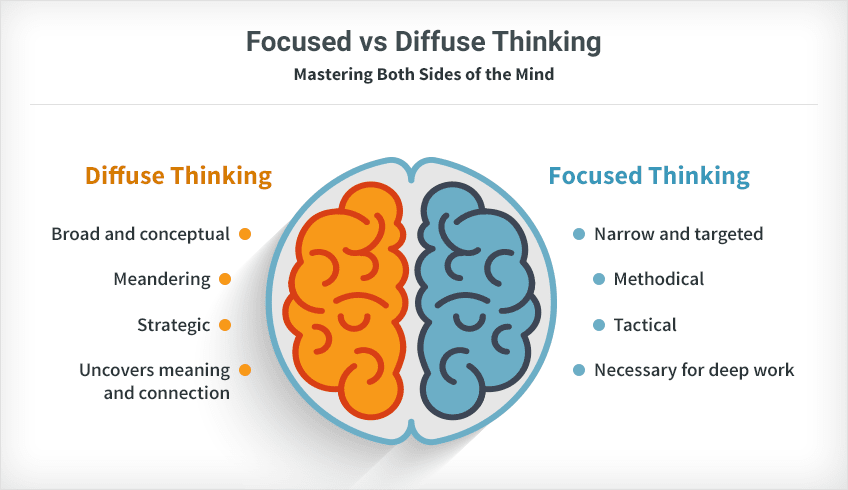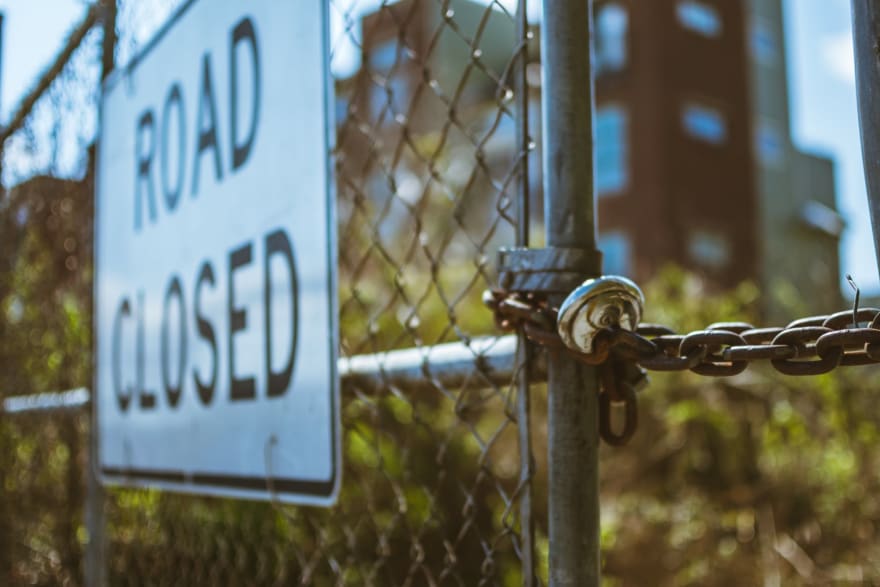Notes taken from the MOOC: Learning How to Learn
Learning can be hard. We all have felt frustrated trying to understand a hard concept in any subject. Learning how to learn will boost your productivity & efficiency; you’ll learn things way faster and better than before, but...
Have you ever thought about how we humans learn?
Maybe yes, maybe no, however, I want to introduce you to a big picture of learning and some useful tools that can improve your learning journey. Basically, we have two ways of thinking and processing information, and knowing how these works let us take the best of both sides.
Table Of Contents
* Focused vs Diffuse thinking
* Big picture and Small Information Chunks
* Better memorization
* Interleaving your learning
* Habits can be both your ally/enemy
* Conclusion: Taking the best of you
Focused vs Diffuse thinking
The human brain has two ways of working: Focused and Diffuse. Keeping it as simple as possible, the focused way it’s when we’re putting all our attention in a task, trying to understand everything as logical and rational and possible based on certain conceptions, meanwhile the diffuse thinking is related to relaxing and letting your mind fly; you may think that your brain is doing nothing important, however, is in this ‘mood’ that we consolidate what we’ve learned using our own external conceptions.
Learning has to be made in a two ways mood, using both the focused and diffuse thinking. Following this approach will give us the opportunity to build a strong knowledge base of small concepts and also understand when and how to use them due to the situation; sometimes a solution to a given problem may be obvious and sometimes there may be even different solutions, in this last scenario you’ll have to pick just one, and hopefully, It has to be the best one possible.
Big picture and Small Information Chunks
A building looking can transmit a safety or not vibe considering how if their outdoor aspect. But, what really makes a building safe is how itself its build, perhaps, this doesn’t mean that outdoor looking isn’t important for potential office/apartment buyers.
The right building is the one that has been built with solid columns and high-quality standards, but it also is beautiful when it is been seen from the outdoor. That’s how learning should be. Having a big-picture around a topic but also having specific micro sets of information that makes you an expert and give you the possibility to switch between different situations.
Having a lot of small micro sets is good, but none of these will work properly if your mind is closed. Your mind should be open to a big-picture context of what you’re currently trying to learn, in order to use in the best way possible what you’ve already learned.
Forming big picture conception happens when you’re using the diffuse mode when you’re exploring unconsciously or maybe just playing without caring too much, also when you try to correlate non-correlated ideas between what you already know and what you’re trying to learn.
Otherwise, forming chunks can be made by following the next steps
Take a topic, break it down as small parts as possible, then study each one by:
- Focusing a lot without distractions
- Understanding the basic idea. The root of the tree about the topic.
- Review the things soon after you’ve learned it.
- Test yourself, you learn more when one hour of testing yourself than with one hour of normal learning.
- Gain context. Understand how, when and which problems can be solved with what you’ve just learned.
- Practice, practice a lot.
Better memorization
The key for fast memorization is repetition, yep, is that simple. Try out a technique such as Spaced repetition, and if you merge this with memory tricks, well, you are going to be kind of Google Data Center.
When studying a topic, try to be as active as possible, you ain’t going to remember anything made in a passive way. Following a tutorial can be nice for having a big picture around certain topics, but you have to face a challenge, a rude test can demonstrate you are learning, you are challenging your own knowledge. If you’re just reading a book, try to recall the information you had just read. Don’t remember anything the same way it has been written, otherwise use your own words and mental representations.
Don’t overstudy! Yeah, this may sound weird, but you have to understand this fact: Your brain, just like any other part of your body gets tired. The same way your biceps hurts when you lift weights or your legs hurts when you make a run. Overstudying has a counterproductive effect on learning, you are more likely to learn and remember just nothing.
Understand your body, your brain. If you’re feeling tired just take a rest. Your learning journey will be way better by taking care of your rest.
Interleaving your learning
Interleaving basically is putting everything you know together into a blender and taking a BIG picture of the result. Once you have a basic idea about a topic, go ahead and try to look at every problem you could solve with the basic idea.
Practice a repetition builds solid neural patterns (Chunks), meanwhile
Interleaving builds flexibility and creativity (Big picture boost).
You live out of the city, you’re running to your home and … road closed due to bad weather.
That’s how Einstellung works for learning, a road closed. Basically, a lack of the big picture because of putting too much effort into a particular subject/kind of problem or whatever you’re learning. Einstellung makes you blind to reach out for better solutions!
Habits can be both your ally/enemy
Habits, in some way can determine where you will be in future.
Understanding how the habits works, give us the opportunity to change the bad ones and create habits aligned with our goals; Every habit is made by four parts:
- The cue, what triggers the routine
- The routine, what we do when we get into the habit
- The reward, satisfying feeling when finished the routine.
Try to build slowly but great habits focused on your learning goals, them, you'll find study habits being a normal part of your life.
Conclusion: Taking the best of you
If you have to learn something, then, put your pants on and go for it. Nobody is going to give you knowledge in a magical way, even when out there are some really GREAT teachers. Try to be as active as possible, by challenging yourself, if you can’t do this by yourself, reach out for a Mentor or somebody that has already mastered the topic in fact. Remember, resting is also very important to consolidate our new ideas, and bringing energy to our brain, just like the ‘less is more’ approach, where you learn one thing at a time but take the best of it.
Create your very first analogy and/or metaphor. When it comes to memorization, try to get tricky. Don’t just recall something in the same way that you consumed it. Try to make your own conceptions. Explore your mind, and keep it open; your mind is kind of umbrella, if it’s closed, then it’s not doing a great job.
Learning hasn’t to be hard or rude. Learning has to be smooth, and cool, and what guarantees this is having good habits and fighting against the bad ones.
Exercise, relax, go outside for a walk with some friends, give you some regards for what you’re achieving and enjoy your journey. Enjoy your life.
Thanks for reading this.





Top comments (1)
Thank you for sharing! I have been trying to build a new routine to get my life more organized. Starting by writing down my to-do list, prioritizing, and scheduling them. At first, it was hard to follow them. But after some time, I'm starting to get used to it. I'm using task management software for easier tracking and to save time. Some of the great tools are Wrike and Quire.